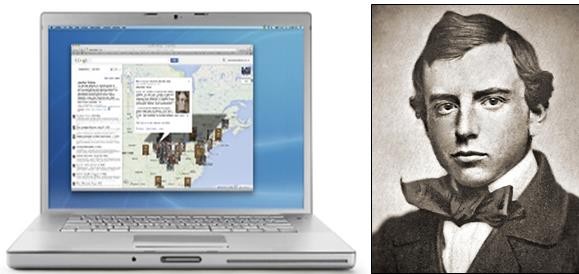Assignment
Generate a word cloud that illustrates something teachable about The Education of Henry Adams (1918). Capture a screenshot of the visualization and then include it in a short blog post which explains how you created the image and why you think it represents a “teachable” resource (i.e. something that might help others learn about or from this notable book).
Bonus
Test out and present an ngram visualization from Google Books or the New York Times (see details below)
Step-by-Step Recommendations
- Brainstorm up some ideas for what might offer a good analysis. For example, something simple –like making a word cloud from a single chapter– might be revealing and also quite easy. Or in a slightly more ambitious way, you might pull together three or four related passages (such as Adams on his “failures” or on key members of his family or some other related “topic”) and then see if visualizing word frequency offers some basis for insight. Be prepared to spend some time on this stage –it might take some trial-and-error to come up with a good idea. And note that NGRAMS are different than word clouds and will be more challenging to organize but still worth testing out if time allows. See below (Background) for more details.
- For easy “cut-and-pastable” online text of the Education, go to the links for Project Gutenberg at the tab on this website for the multi-media edition.
- Take care to create and refine a visualization that has a compelling design. You might have to tinker with details such as font, color, layout, and word count to get it “just right.” You can also remove certain unimportant or repetitive words if they clutter the cloud.
- Don’t forget to use screen shots to capture the image. Then crop the image to improve the presentation. And make sure to save them in a file format (like jpg or png) that can be uploaded as an image into your blog post (use the “Add Media” button). If you don’t know how to make screen shots using your computer, then just Google it.
- Keep the blog post very short (probably 200 words or less), but make sure to explain which part or parts of the book you used to generate the word cloud. Also, don’t forget to provide just a few basic details necessary for understanding what it is –such as indicating the exact number of words in the cloud itself (top 150, top 100, top 25, etc.)
Background –Word Clouds
Word clouds are graphic representations of word frequency. They represent a quick form of text visualization that can help illustrate important word choices, text patterns, and even sometimes larger themes within a textual source. There are many different online tools that can help you freely generate word clouds. Here are two of the most popular:
Both are free and neither requires registration. Yet each has a slightly different interface so you should test them out for yourself. However, here are two short video tutorials that should help you decide which is best for you:
If you want to see how some K-12 educators have tinkered with the idea of “teachable” word clouds, check out this link. Or click here to see how we are trying to use “clickable” word clouds at Lincoln’s Writings, but realize that unless you know how to code, your clouds for this presentation won’t be clickable. Of course, word clouds can be abused, too. Check out this provocative blog post from a software programmer at the New York Times who hates the way some journalists overuse clouds, and try to avoid the stuff that drives him crazy.
Background –Ngrams
The Google Ngram Viewer offers a way to visualize word usage patterns over time across millions of books published before 1923. And just recently, the New York Times has opened up a tool called Chronicle that allows users to create ngram-style visualizations of words or phrases that have appeared in the Times since 1851. For a bonus, you might also try tinkering with these tools to create a chart that could prove useful within a multi-media edition of the Education. As you brainstorm for this “bonus,” remember that unlike a word cloud, in this case you’ll need to think about how other texts use Henry Adams and his memoir –not what’s in the memoir itself.
